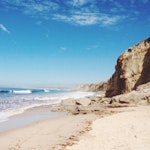Mentoring Elevated by Walking and Nature - Via Francigena (Road to Rome)
Join WM founder João Perre Viana and Kiki Keating on The Via Francigena (Road to Rome). This is a journey of self-discovery where you can explore your needs, desires, fears, and obstacles that keep you from reaching your potential. It helps you explore your true identity. Through this program, you will be able to understand your purpose, set goals in your life, and achieve them with the support of your action plan. Setting well-rooted goals and having a plan to achieve them is the single most powerful step toward living a fulfilling life.
The Via Francigena is an ancient road and pilgrimage route running from the cathedral city of Canterbury in England, through France and Switzerland, to Rome and then to Apulia, Italy, where there were ports of embarkation for the Holy Land. It was known in Italy as the "Via Francigena" ("the road that comes from France"). In medieval times, it was an important road and pilgrimage route for those wishing to visit the Holy See and the tombs of the apostles Peter and Paul.
It is mainly thanks to the travel journals, and in particular the notes of the illustrious pilgrim Sigeric, that we can nowadays reconstruct the ancient path of the Francigena. In 990, after being ordained as Archbishop of Canterbury by Pope John XV, the abbot went back home noting on two manuscript pages the 80 mansions where he stopped for the night. Sigeric’s journal is still considered the most authoritative source, so much so that often we talk about “Via Francigena according to Sigeric’s itinerary”, in order to define a more “philological” version of the path.
If you want to participate in our program, register and you will be notified to join our group call. This is the first step of your journey.
During our call, you will have the opportunity to meet your mentors and revise all aspects of the program: The reason to participate, schedule, traveling arrangements, gear, fitness level, payment plans, etc.
Watch some videos from previous years:




























